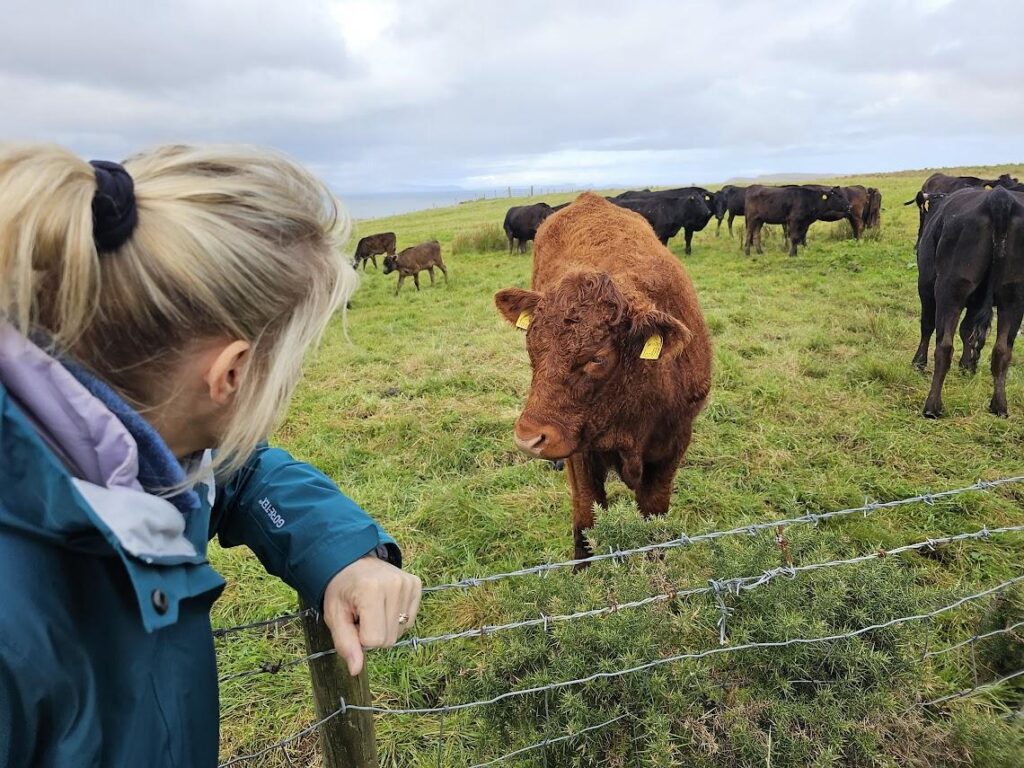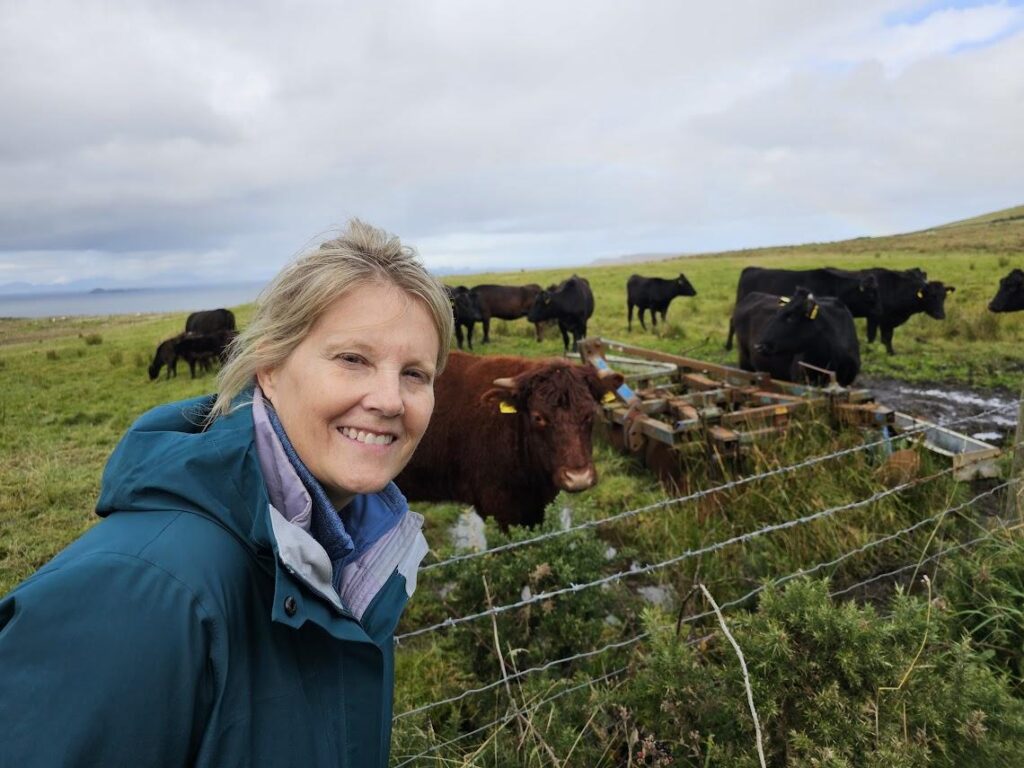Even on the narrowest one lane roads in Scotland, when my fingers were clenched around the armrest, my eyes were peeled on the fields for Highland Coos (Coo is Gaelic for cow. Scots pronounce it Heilan coo and tourists dub them hairy coos.)
While researching Scotland, they captivated my attention, and I made it my mission to meet them up close and personal someday.
Who knew I’d fall in love with a hulky, big-eyed, long-lashed, shaggy-haired ginger! I can’t say why I love these widely famous creatures, but they’re my type of celebrity. My husband so generously obliged my obsession—swerving to the side of the road at the sight of one, making sudden U-turns, and taking pictures for me.

I wanted to stare at them, talk to them, and pet one. I managed two of those three. They stare back, wide-eyed, and take all the fuss in stride. I’d swear they enjoy all the attention.


Believe me when I say that I was not the only woman under the spell of these famous coos, racing toward them with girlhood glee. When they offer tourists an up-close photo opportunity at the fence along the road, they create quite a traffic jam.

On the Isle of Skye, a tourist romped up to a farmer’s fence, raising the owner’s ire. When the gentleman thought petting the bull’s horn was a great idea, a screaming banshee came racing down the road on her four-wheeler, waving her hand and warning people to get back, get in their cars, and move down the road. Our B&B host later explained her vehement insistence. In a very recent incident, that bull took offense to a tourist who had jumped that fence to pet one of her cooies. It apparently ended up quite a “gorey” event. I guess bulls don’t like people “coo-dling” with their females.

I wish I could relate the sound of a Scot calling his cooies. One owner lured tourists and coos alike with his long-drawn out calls of “cooie.” Slowly his coos drew close to pose for pictures.

Here are a few fun facts about these long-locked lovelies for those of you as eager as me to learn more.
They’ve been grazing in the Highlands since the 6th century.
Their shaggy coats can grow as long as 13 inches. The top layer is oily and keeps water from their skin. Under that layer is soft fur to keep them warm.
Both males and females have horns. Females’ horns have an obvious upward curve. Males’ horns curve forward and with slight rise at the tip of their horns, used for defense against predators (That’s not really an issue in Scotland, but maybe in North and South America or Canada or Australia where you also find these massive creatures). They rake up snow and forage for food in the winter with their horns.
The original ones were mostly black, but, as the story goes, Queen Victoria took a liking to the ginger-colored ones, so they were selectively bred for that color. Red is now the standard, but you’ll also see black, white, silver, yellow, and brindle coos.
Use the term fold, not herd, when talking about them collectively.
They were once important to Scotland’s economy and near extinction. A tour guide told me they make excellent meat, even leaner than chicken, but are no longer commercially viable for beef farming because the price of the meat is so high.
Queen Elizabeth II loved them and ordered some to graze on the estate at Balmoral Castle.
Cattle thieving was once a major problem for the highland clans. Rob Roy MacGregor was a cattle drover, dealer, and, dare I say, a thief. (Now there’s a gingered-haired Scot you may recognize.)

Hairy coos are my kind of celebrity. These famous creatures are as much a part of this majestic, rugged land as kilts, bagpipes, and whisky.
There’s so much to love about Scotland.
